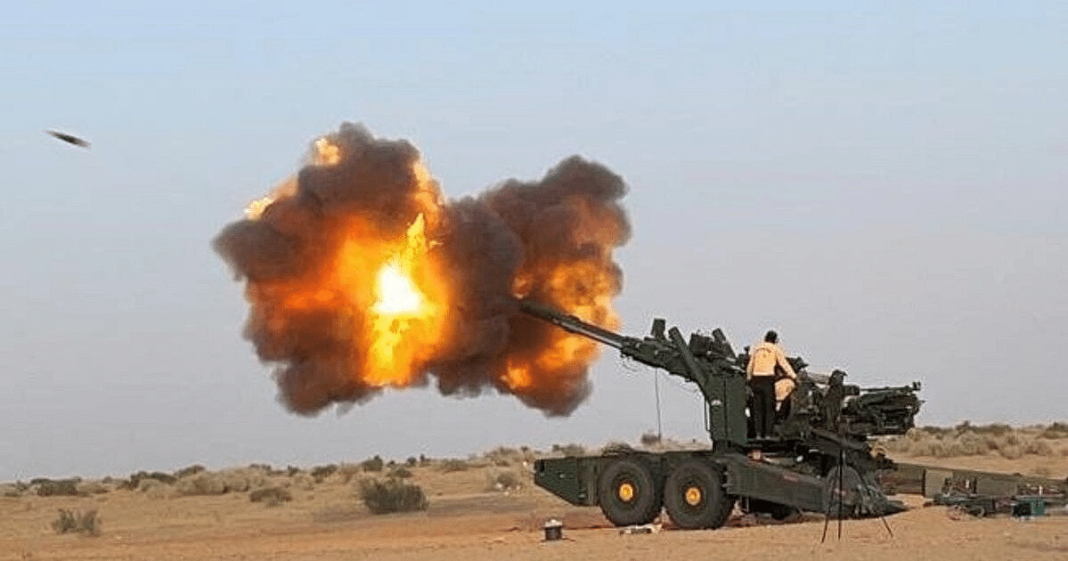For years, India’s artillery modernization efforts have been plagued by delays, despite possessing the necessary resources to facilitate progress. The Advanced Towed Artillery Gun System (ATAGS), initially perceived as a revolutionary solution to the country’s artillery issues, has instead become a symbol of a deeper, ongoing struggle within India’s artillery acquisition framework.
The origins of this predicament trace back to 1986 when the Indian Army welcomed the Bofors FH-77B howitzers into its arsenal. In 2017, the ATAGS was introduced with great expectations, showcased during the Republic Day Parade and heralded as a homegrown replacement for the aging artillery systems. However, despite the initial enthusiasm, the ATAGS has yet to be integrated into the Indian Army’s artillery regiments. This prolonged delay raises questions not merely of tactical priorities but also points to significant bureaucratic inertia, missed opportunities, and a reliance on outdated methodologies. This has resulted in a glaring shortfall of modern artillery equipment essential for operational readiness.
The Indian Army’s Field Artillery Rationalisation Plan (FARP) was established in 1999 with ambitious targets, aiming to procure 2,800 pieces of 155mm artillery guns by 2027. Unfortunately, recent findings from the Comptroller and Auditor General (CAG) reveal that progress has been painfully slow, with only eight percent of the targeted 2,800 guns acquired to date. Of the various proposals for new artillery systems, merely 17 percent have seen actual delivery, exposing a stark gap between ambition and reality.
The Defence Research and Development Organisation (DRDO) has successfully developed the ATAGS but has faced challenges stemming from underutilized production facilities. Even after extensive testing, trials, and successful exports, notably to Armenia, the artillery systems remain uncommissioned due to a stagnated ordering process. As recently as March 2023, the Ministry of Defence (MoD) approved a marginal procurement plan for 307 ATAGS guns—a move that, while positive, hardly overcomes the chronic inertia plaguing artillery acquisition.
In a potential turning point for the program, Bharat Forge has announced it is nearing finalization of a contract with the MoD. The estimated deal, valued at approximately Rs 7,000 crore, is expected to be split between Bharat Forge and Tata Advanced Systems Limited (TASL), reflecting a collaborative approach in tackling artillery modernization. Notably, Bharat Forge emerged as the most competitive bidder in this process.
The capabilities of the ATAGS add to its potential significance. The system can engage targets at ranges of 35 kilometers with Extended Range Sub-Bore Boat Tail (ERFB BT) ammunition and up to 45 kilometers with ERFB Base Bleed (BB) rounds. Remarkably, the ATAGS has even recorded a range of 47 kilometers during trials. Coupled with its operational excellence across varying terrains, from arid deserts to high-altitude regions, the ATAGS demonstrates its effectiveness as an artillery platform by achieving a rapid firing rate of 10 high-explosive shells in just 2.5 minutes.
Nonetheless, these commendable features risk being overshadowed if the procurement process continues to be ensnared by inefficiencies. The ATAGS has the potential to significantly enhance India’s artillery capabilities and fulfill the aspirations of the FARP. However, the ongoing threat remains that the MoD may again allow the system to fall prey to bureaucratic delays.
The urgency for the Ministry of Defence and the Indian Army to expedite the modernization of artillery systems has never been clearer, especially in light of the CAG report. With India’s artillery regiments still under-equipped amidst an increasingly unstable geopolitical landscape, the ATAGS could signify more than just an upgrade—it might be pivotal in redefining the entire artillery procurement strategy.
Ultimately, the successful induction of the ATAGS represents an important milestone for India’s “Make in India” defense initiative, showcasing successful collaboration between the public and private sectors in addressing critical defense shortfalls.





